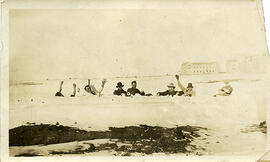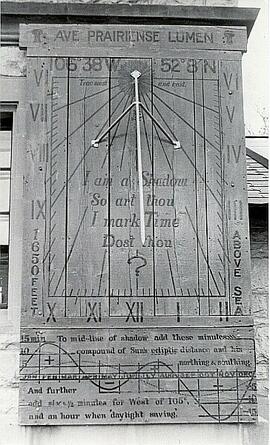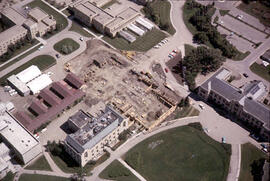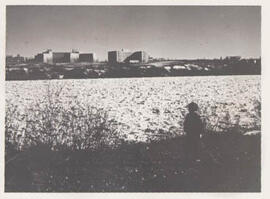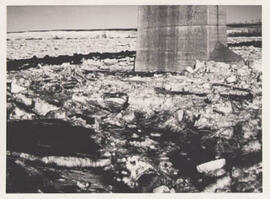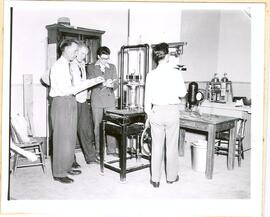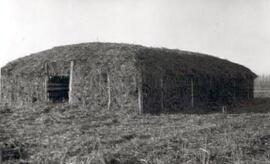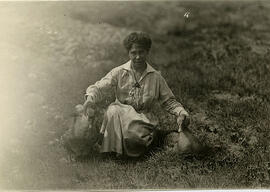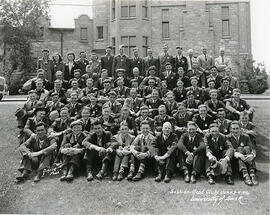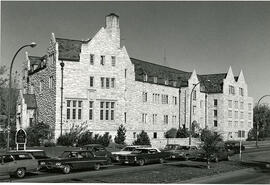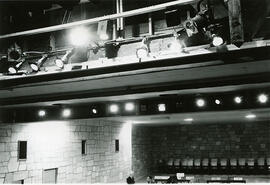Jean G. Bayer, Department of English, 1915-1945, crouching by two ducks at an unknown location.
Bio/Historical Note: Jean Gordon Bayer joined the staff of the university in 1909 as President Walter Murray's secretary. Bayer previously had been his secretary at Dalhousie University. She arrived in Saskatoon in time to witness the registration of the first students. She was the President’s secretary, university librarian, and unofficial adviser to students. Bayer helped choose the university colours and motto, and was one of the founders of the Pente Kai Deka Society. In 1915, due to staff shortages caused by the Great War, Bayer was appointed Instructor in English. She proved so effective she was encouraged to continue, and took a year of study at Bedford College, London, prior to being formally appointed to the faculty. Like Murray, “she possessed a wide vision of the function of a university and, like him, she…dedicated herself to Saskatchewan.” “A most kindly guide” to her students, “many caught their first glimpse of what a literary ‘salon’ of the great days might have been in the genial atmosphere of tea and literature in her book-lined suite. She was a most loyal and cooperative colleague….She made it seem an easy thing to be happy and brave.” When Bayer returned from London in 1921 she was named Assistant Professor of English, a rank rarely held by women in that period. Bayer retained the post until her death in 1945. A scholarship in her name is available to a student who has completed at least two years of university studies

